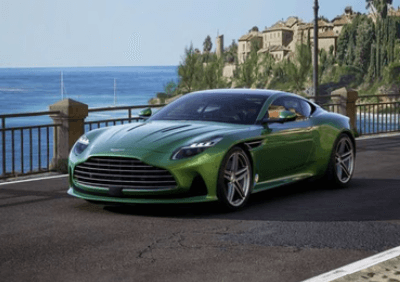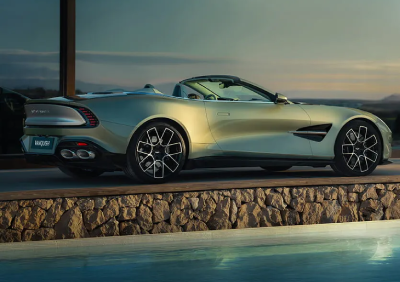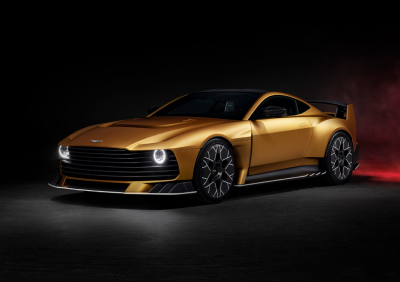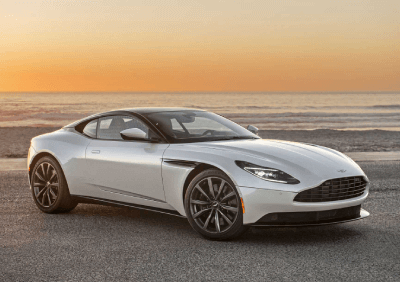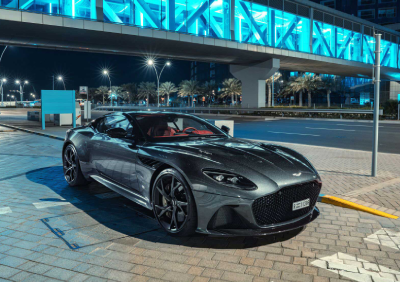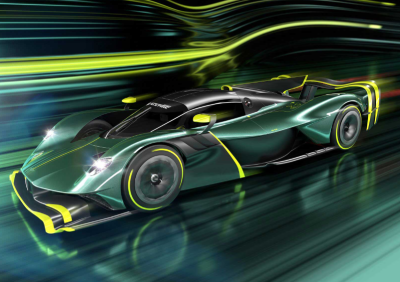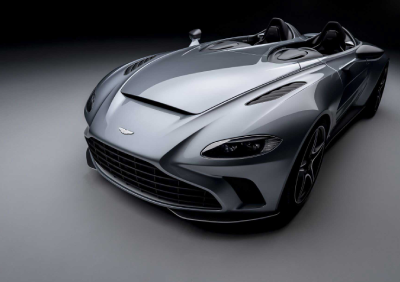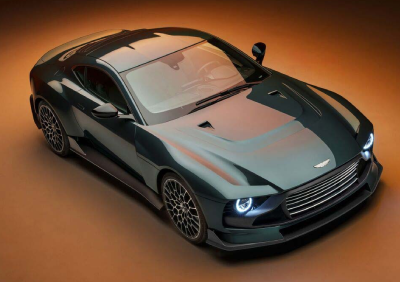Aston martin's First ever hypercar
Valkyrie
otherworldly performance
EVERY INCH OF VALKYRIE IS ENGINEERED TO THE IMPOSSIBLE.
Tolerance of 3.5g. Speeds of 200mph. Downforce more typically associated with the lift and pitch of a fighter jet. If you’ve heard the rumour that part of an Aston Martin Valkyrie comes from an Apache gunship, the rumour is true. Nothing that already existed in the automotive world had the hydraulic power required to run all this. Or handle the pressure of bringing F1™ track pedigree to the road. The downforce is so otherworldly that the tires would just burst. Piloted by the Active Control Unit, thousands of times a second, the active aero recalibrates the suspension, damping and form of the car.

Play Video
Responding like a reflex to live inputs from driver, road and aerodynamic load, to bleed off excess downforce and keep it within limits the tyres can take. A technical marvel with seventeen different actuators powering the hydraulics. As well as three different controllers – skyhook, groundhook and aerohook – finetuning damping force to improve the dynamics of its Formula 1™ derived double wishbone suspension. Arming the Aston Martin Valkyrie with virtually no body roll.
Blending breath-stealing cornering with heart-stopping straight-line speed, and an ability to accelerate without pitch. Brake without diving. Make light of potholes and subdue the most undesirable road conditions. With military technology, military firepower and military precision.
LIMITED MORE BY PILOT, THAN MACHINE. DESIGNED TO STICK TO THE ROAD, VALKYRIE IS CAPABLE OF TAKING CORNERS AT OVER 3.3G
The Aston Martin Valkyrie has a 6-point harness for a reason. The lateral g-force of this road-legal car is about 3.3g. The braking force is 1.9g. So every point of that harness is carefully placed to weld you in position and stop you sliding out of the seat. It might be important to put that into some kind of context. Lateral g-force is a measure of the acceleration when changing direction horizontally.
Play Video
That is, it’s the sidewards acceleration of the car, felt in corners as you turn. The higher the g, the more mechanical grip the car has during cornering. And as we all know, the better the grip, the better the performance. Most road cars produce between 0.6 and 0.7g. Top-of-the-range sports cars tend to top out at around 1.1g.
The Aston Martin Valkyrie produces 3 times that. More than 3 times the force of gravity raining down across every pore of your person. The wheel engraves new feeling into your palm. The contours of the seat cosset your body with more closely-wrapped intensity. You weigh three times more than you do normally. It feels like you’re flying and at the same time you’re heavier than you’ve ever been before.
THE HIGHEST REVVING, MOST POWERFUL NATURALLY ASPIRATED ENGINE. ON THE ROAD.
An extreme work of modernity. Built from nothing, with zero precedent, to scream all the way up to 11,100 rpm. The most powerful naturally aspirated engine to grace any road car so far. So loud, and throbbingly fierce, that every Aston Martin Valkyrie is delivered with helicopter-grade, noise-cancelling headphones to protect you from redlining your eardrums. But not deafening: an external mic on the outside of the car picks up sirens and other signals so you can hear the road through its 12-cylinder orchestra. How did we build something so impossibly powerful?
By starting impossibly small. Cosworth took the idea of a humble straight three and effectively developed a quarter of an engine. This allowed them to test and develop the combustion system they wanted to use on a scaled-down and more precisely manageable platform. When everything from chamber shape to valve angles and compression ratio was perfected, they took the resulting straight three, put another end to end, then two more back to back, to create the basic configuration for this V12 marvel.
Play Video
This approach allowed us to ensure that both the power requirements and emissions levels we needed could be hit. And what a spine-searing, bone-rattling hit. The V12 packs 154 bhp per litre. Reaching a total output of 1130bhp, with KERS assistance. While weighing in at a mere 202kg. If you don’t quite believe your eyes reading that: as the power revs up to 10,000rpm, your vision literally begins to blur.




